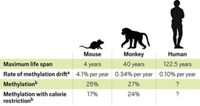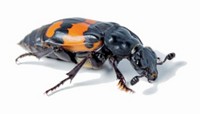Advertisement
Grab your lab coat. Let's get started
Welcome!
Welcome!
Create an account below to get 6 C&EN articles per month, receive newsletters and more - all free.
It seems this is your first time logging in online. Please enter the following information to continue.
As an ACS member you automatically get access to this site. All we need is few more details to create your reading experience.
Not you? Sign in with a different account.
Not you? Sign in with a different account.
ERROR 1
ERROR 1
ERROR 2
ERROR 2
ERROR 2
ERROR 2
ERROR 2
Password and Confirm password must match.
If you have an ACS member number, please enter it here so we can link this account to your membership. (optional)
ERROR 2
ACS values your privacy. By submitting your information, you are gaining access to C&EN and subscribing to our weekly newsletter. We use the information you provide to make your reading experience better, and we will never sell your data to third party members.
Environment
Newscripts
Lessons In Love And Chemistry
by Stephen K. Ritter
June 1, 2015
| A version of this story appeared in
Volume 93, Issue 22

“Jimmy and Mary sitting in a tree, K-I-S-S-I-N-G. First comes love, then comes marriage, then comes Jimmy Jr. in the baby carriage!” This timeless ditty has long served as a useful social commentary on puppy love and relationships. Being June, the month most associated with weddings, Newscripts offers a sampling of recent research on romance and its consequences, from the tree to the baby carriage and beyond.
First, in order to get to the tree, anthropologists at the University of Utah provide evidence that Jimmy has evolved better navigation skills than Mary. By testing and interviewing members of the Twe and Tjimba tribes in Namibia, the researchers found that the men were significantly better than the women in visualizing spatial relationships and manipulating images in their minds (Evol. Hum. Behav. 2014, DOI: 10.1016/j.evolhumbehav.2014.09.009).
The men traveled a lot more than the women, and the men who did best on the tests had traveled farthest and had children with more women. The study offers another cog in the wheel of human evolution, in this case the relationship between navigation and reproductive success. The authors did not comment on the male preference of refusing to stop to ask for directions when lost, even when politely asked to do so.
As to falling in love, scientists have known that humans bond emotionally as we gaze into each other’s eyes, which is a process mediated by the hormone oxytocin. Japanese researchers have now shown that mutual gazing also mediates bonding between us and our dogs (Science 2015, DOI: 10.1126/science.1261022). This finding seems to be important for couples like Jimmy and Mary who might decide to get a dog as a test run for having kids—the oxytocin gaze is critical for helping moms bond with their newborns.

The researchers found via urine testing that oxytocin levels spike in both humans and canines when the two species interact. This instinctual bonding mechanism likely played a role in the domestication of dogs, they believe.
Speaking of having children, researchers in Canada have found that Jimmy’s diet and smoking and drinking habits before conception may play a role in a baby’s health. Working with mice, the researchers found that folic acid deficiency led to epigenetic changes in sperm that resulted in a 30% increase in birth defects (Nat. Commun. 2013, DOI: 10.1038/ncomms3889). Scientists have previously shown that low folic acid levels in moms during pregnancy are linked to birth defects. The researchers suggest that fathers with unhealthy habits may have lower levels of folic acid and may not metabolize it in the same way as healthier dads-to-be.
In another study with folic acid connections, researchers in Norway took a look at old church records to determine that exposure to different levels of ultraviolet radiation during the sun’s 11-year solar cycle has an impact on birthrate and life expectancy (Proc. R. Soc. B 2015, DOI: 10.1098/rspb.2014.2032). They found that children born in extra-sunny years—that is, years with a lot of sunspots and maximum solar activity—lived on average 5.2 fewer years than children born in years with the lowest solar activity. The overexposed children also had fewer children and fewer grandchildren than those born during the sun’s lulls.
Sunlight promotes production of vitamin D, but it also can degrade folic acid. The Norwegian researchers suspect a connection with their findings. “There are probably many factors that come into play,” they note, “but the conclusion of our study is that you should not sunbathe if you are pregnant and want to have a lot of grandchildren.”
Steve Ritter wrote this week’s column. Please send comments and suggestions to newscripts@acs.org.







Join the conversation
Contact the reporter
Submit a Letter to the Editor for publication
Engage with us on Twitter